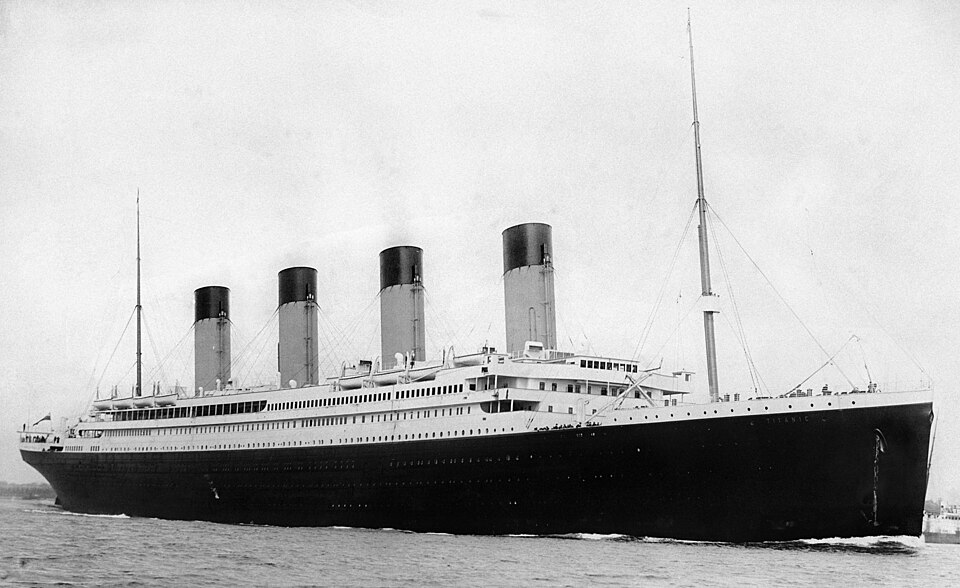
Why did the Titanic sink? The Titanic sank because of poor quality materials, problems with the design, the temperature of the water, and a lack of equipment for the crew.
I’m sure you are all familiar with what happened to the Titanic. The Titanic was built in Britain, and she was an ocean liner owned by White Star Line. The ship was built between 1909 and 1912 at a shipyard in Belfast, Ireland. At the time of the Titanic’s building, Belfast and all of Ireland were part of the United Kingdom. The Titanic was the largest ship ever built at the time, and the owners of the shipyard had to come up with new ways of building ships to accommodate her. They had to remove three bays to make space. Because of the new technology used, the ship was thought to be unsinkable. Once the ship was built, she was registered, tested, and sailed to Southampton to begin her maiden voyage, which would become infamous.
The Titanic sailed from Southampton on the 10th of April, 1912. She stopped at Cherbourg in France and then Queenstown in Ireland to pick up passengers before sailing out into the Atlantic. Her destination was New York, and the route was planned to take 6 days, and it was supposed to be the first voyage of many. The ship sailed out into the North Atlantic with 2,224 passengers and crew on board. They made it about two-thirds of the way across before they hit an iceberg at 11:30 pm on April 14th. Two hours and forty minutes after the collision with the iceberg, the unsinkable Titanic sank. 1,500 people died.
So, why did an unsinkable ship sink? The first cause was human error. At the time of the crash, the Titanic was sailing at full speed, despite having been warned off ice in the area. It was the ship’s maiden voyage, and the captain was under immense pressure to cross the Atlantic as quickly as possible. There was also a mistake where the key for the locker that held the binoculars for the lookouts was lost. The lookouts did see the iceberg, but the ship was going too fast to be able to avoid it. If they had had binoculars, perhaps they would have seen it in enough time to avoid it. Although seeing as it was the middle of a moonless night, probably not.
The second cause was the quality of the materials that the Titanic was made of. The wreck of the Titanic was discovered in 1985, and samples of her hull were brought to the surface. Some pieces had been broken off, presumably where the Titanic hit the iceberg. Titanic’s hull was made of low-carbon steel that had high levels of sulfur in it. This was common at the time, but the level of sulfur in the Titanic’s steel was exceptionally high. This sulfur reacts with the steel to give it a honeycomb pattern, which drastically reduces its strength. The metal becomes very brittle. This is made even worse when the metal is chilled, which it was in the cold seas of the Atlantic. When modern steel is chilled and then hit with a hammer, it deforms, but doesn’t break. When Titanic steel is chilled and hit with a hammer, it shatters. The same is true for the rivets that held the steel in place.
The third cause is the design of the ship. Firstly, the steel in the hull was only a single sheet, not double. When the ship hit the iceberg, it shattered the hull and tore several gashes along 100 m of the side of the hull, exposing the inside of the ship. If the ship had been double-plated, the inner layer might have survived and kept the water out. This would mean more money when making the ship, and it would increase the weight of the ship, which might be why it wasn’t done. Secondly, the watertight compartments were poorly designed. The main reason that the Titanic was billed as unsinkable was that she had 16 watertight compartments in her hull. If any of them flooded, they could be sealed off, protecting the rest of the ship from filling with water. When the Titanic hit the iceberg and tore a hole in her side, six of these compartments began to fill with water. They were immediately sealed off by the crew. The problem was that they were not really watertight because they were open at the tops. The weight of the water in the compartments at the front of the ship pulled the nose down, which pulled more water into those compartments and when they filled, the water spilled over the tops of them into the other compartments. Once that started, the ship was doomed. The weight at the nose pulled down on that part of the ship, and the weight of the propellers at the back pulled down on that part of the ship, and the brittle iron snapped. If the compartments had been truly watertight, the Titanic might not have sunk. Or, it might have been able to hang on for long enough for another ship to reach her. A lot of lessons were learned when the Titanic sank. And this is what I learned today.
Sources
https://writing.engr.psu.edu/uer/bassett.html
https://www.usni.org/magazines/naval-history-magazine/1996/october/how-did-titanic-really-sink
https://en.wikipedia.org/wiki/Titanic
Image By Francis Godolphin Osbourne Stuart – http://www.uwants.com/viewthread.php?tid=3817223&extra=page%3D1, Public Domain, https://commons.wikimedia.org/w/index.php?curid=163984148

Pingback: #1511 How does an icebreaker ship work?